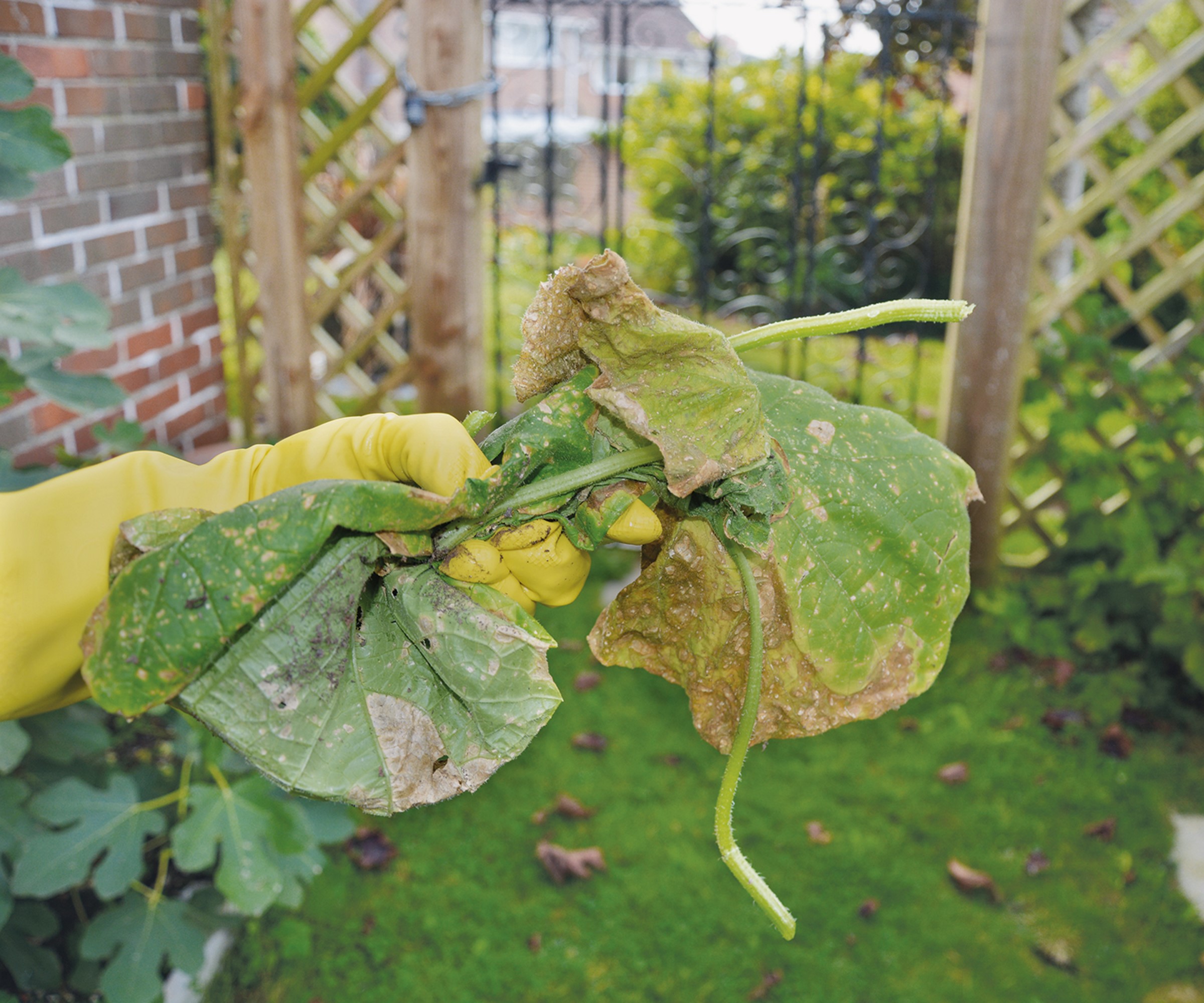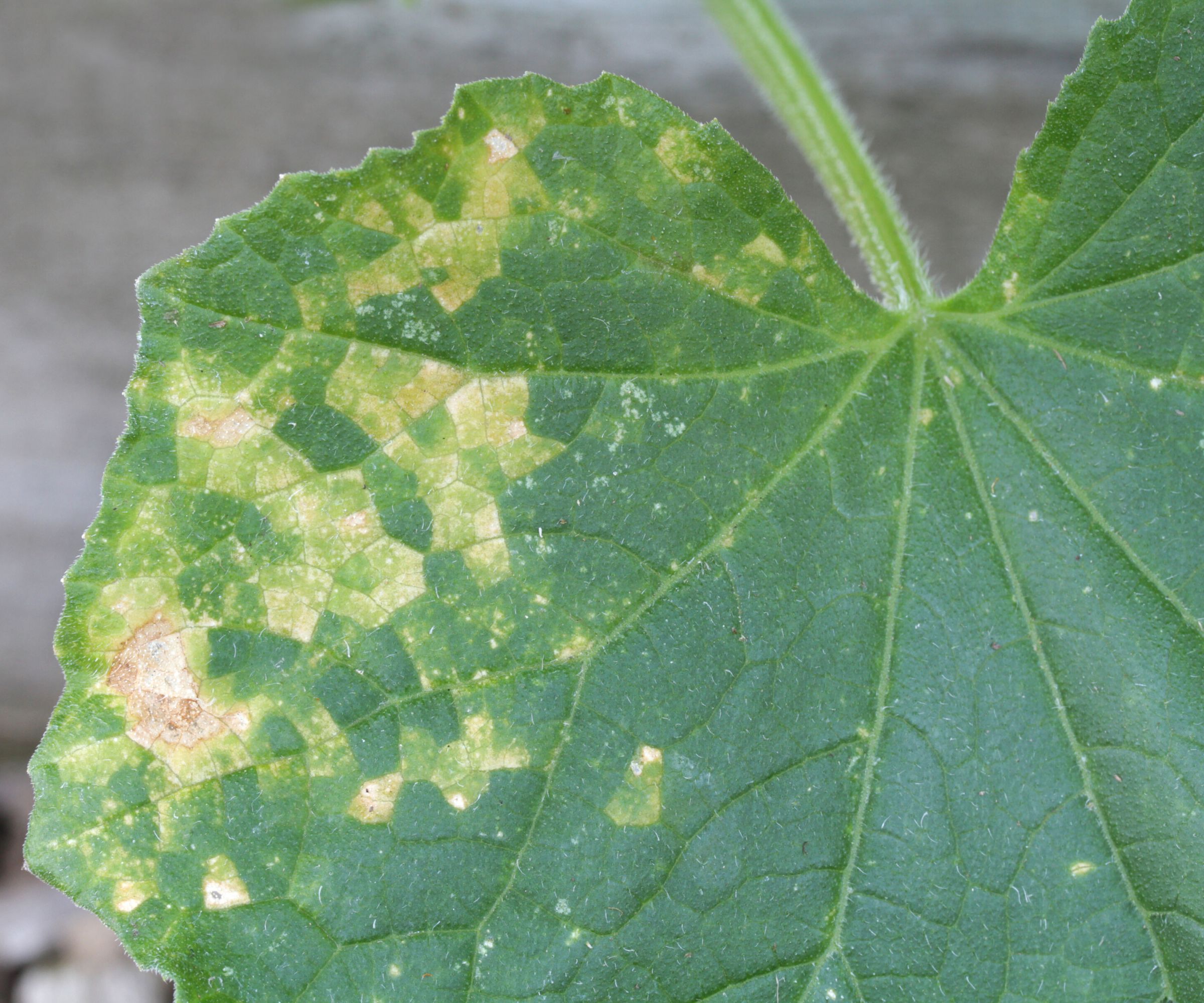
Zucchini can be a prolific cropper and just a handful of plants can give you all the fruits you need for stir fries, salads, casseroles, zucchini noodles, and more. To guarantee the best harvest you need healthy plants, but there are diseases that can strike your zucchini.
There are fungal and bacterial problems that can affect leaves, stems, and fruits of the plant. It is important to spot any issues quickly so you can act fast and give your plants the best chance to overcome problems and ultimately prosper.
If you are either new or experienced at growing zucchini, then diseases can, and will, strike. We take a look at some of the most common zucchini diseases, including the signs to look out for and what measures can be put in place to help protect plants and ensure they give a strong harvest.

How to spot zucchini diseases
Zucchini are popular to grow in vegetable gardens and kitchen gardens as they are prolific croppers and also one of the best drought-tolerant vegetables. They are hungry crops that want a lot of water and nutrients to grow into big and healthy plants and provide a strong yield. Before you plant zucchini, add some compost or well-rotted manure into the planting site to enrich the soil and always grow the plants in a sunny and sheltered spot.
Water the plants regularly as they grow and keep a close eye on them to spot signs of any pests or diseases. The quicker you can spot issues, the faster measures can be put in place to deal with them.
Charmaine Peters, director at Arden Farm, which grows more than 30 varieties of organic fruits and vegetables for its agrihood residents in Florida, says that ‘regular monitoring is vital to catching diseases early and saving your plants’.
She adds: ‘Gardeners should also be taking measures to prevent them so they can ensure a healthy harvest of fresh zucchini. By scouting out your plants once a week and looking both on the top and the underside of the leaves, you’ll be able to spot any discoloration, rotting, or dead material.”
While out in the yard, look at the foliage color, look at the quality of stems, and pay close attention to any signs of damage or wilting, or irregular growth patterns. Simple measures such as removing diseased leaves and watering correctly can help keep zucchini plants thriving and producing lots of delicious fruit.

Powdery Mildew
Powdery mildew is a very common problem for zucchini and will leave many growers wondering why their zucchini leaves are turning white. It forms as a powdery white substance on the foliage, especially the lower leaves of the plants, and can cause poor fruiting and for leaves to turn yellow and die off. This fungal disease is most prevalent in hot and humid weather and rife in the summer.
Dominique Kline, Farm Manager at The Hope Farm in Fairhope, Alabama, claims ‘most zucchini eventually show signs of’ powdery mildew in their US hardiness zone, unless the plants are bred or treated specifically for mildew.
‘Overhead watering and fluctuations of heavy rain mixed with hot and dry days are some of the main culprits,’ she says. ‘The best treatment is prevention. Plant in areas with ample air circulation, and mulch around plants to help keep soil off of the leaves. Watering with a soaker hose or drip irrigation toward the base of the plant is ideal for zucchini, keeping excess moisture off of the leaves when possible.’
Dominique adds: ‘Mildew doesn’t have to be a death sentence for the plants, though. In addition to treating the leaves with gentle fungicide, one method I have used to help the plants overcome and bounce back is to grow them vertically, binding the stalks to a stake or pole and removing the lower leaves as they show signs of disease.
‘Over time, as the plants grow taller, they will encounter less splash back from heavy rains, and can create a canopy of healthy, disease-free leaves.’
Watering from above is a common garden watering mistake and it can be culpable for spreading many fungal diseases. Always water at the base of plants and ideally do it in the morning so any water on leaves has time to evaporate during the day.

Downy Mildew
Downy mildew is not a fungal disease but a water mold that is spread by airborne spores. It does not give leaves a dusty coating like powdery mildew but shows as yellow and angular blemishes on foliage that grow between the veins on the upper sides of leaves. As it develops, brown areas and a dark-purple-to-gray fuzz can form on the underside.
It occurs in cool and wet weather when the temperatures are around 60-70F, commonly causing issues at the start or end of the zucchini season. The disease can spread very quickly in wet or humid conditions, with the spores needing water to spread.
There are resistant varieties of zucchini available to choose and simple techniques, such as avoiding overhead watering and ensuring good circulation by spacing plants properly, can all help to prevent problems with downy mildew.
A good option for a fungicide to treat powdery or downy mildew is Garden Safe Fungicide spray, available at Amazon, which can be used to treat fungal problems on flowers, ornamental trees and shrubs, fruits and vegetables.

Mosaic virus
Mosaic viruses can affect more than 150 types of fruits, vegetables, and flowers, including zucchini. It causes foliage to have a discolored and mottled appearance and any fruits can also be small or distorted. This virus is spread plant to plant, either by insects such as aphids or by gardeners using dirty tools.
Charmaine Peters from Arden Farm says: 'Because there is no cure for mosaic viruses, preventing them is crucial. If you catch any of your plants with these diseases, remove all of the infected plants and destroy them. Not only will these diseases ruin your garden, but they will also ruin your compost pile. After disposing of your infected plants, don’t forget to disinfect your tools and gardening gloves before using them again.'
To help prevent mosaic viruses, consider companion planting to help get rid of aphids. Aromatic herbs such as rosemary, lavender, or chives are repellents for aphids and can keep pests away from crops. Also, always use clean garden tools whenever you are out in the yard working to avoid transporting viruses from one plant to another.
You can get virus-resistant zucchini varieties, such as the Gourmet Gold Hybrid zucchini available from Burpee.

Blossom end rot
While not actually a disease, zucchini, just like tomatoes, can suffer from blossom end rot. It is a disorder that causes browning and softening at the end of the fruit and it is caused by problems with calcium uptake. A lack of nutrients, combined with poor drainage and hot temperatures, can cause fruit rot.
It is recommended to get your soil tested before planting to see if there is a calcium deficiency in the soil. Even if there is enough calcium, a lack of moisture in the soil can hamper the plant from taking the nutrient in and transporting it around its tissues.
Inconsistent watering can be a contributor to blossom end rot and there are ways to help keep the soil moist in summer for the benefit of hungry plants. Using drip irrigation or mulches can help create a more steady level of moisture in the ground to help combat blossom end rot.
Charmaine Peters recommends keeping an eye on the flowers for signs of rot issues, adding: ‘Blossom end rot in zucchini softens and decays on the squash blossoms that turn the buds yellow and then black. Even if you’ve never harvested zucchini flowers, they are important to monitor for discoloration so you can reverse fruit rot early.’

Verticillium Wilt
Verticillium wilt is a fungal problem that can cause zucchini plants to turn yellow or wilt, often causing half the plant to suddenly droop while the other half seems unaffected. It is a fungal problem that hits many different plants, for example, it is a disease that affects strawberries and also a common dahlia disease, as well as hitting tomatoes and peppers.
The fungus that causes verticillium wilt prefers cooler temperatures and appears from mid-summer onwards. Unfortunately, there is nothing that can be done if a plant is hit, and the recommended practice is to remove and destroy affected plants.

Bacterial Wilt
The other wilt that commonly affects zucchini is bacterial wilt. Caused by the bacteria Erwinia tracheiphila it can cause entire plants to wilt, often starting with a few leaves or sections wilting before quickly spreading to hit the whole thing.
The disease often tends to be spread by spotted and striped cucumber beetles, so look up and add good zucchini companion plants to your garden to help get rid of cucumber beetle risks. The likes of nasturtium and marigolds are good options as they are known to repel cucumber beetles. Removing weeds will also help as cucumber beetles often linger on them. Again, there is no treatment for bacterial wilt and infected plants need to be removed.

Leaf spot
Bacterial leaf spot is caused by Xanthomonas campestris bacteria and it shows as small spots on leaves that are accompanied by yellow margins. These spots will grow and eventually merge, and zucchini will also show small and beige spots on the fruits. Bacterial leaf spot is primarily a summer problem as it thrives in hot weather and moist conditions.
It can get into plants through wounds, so care must be taken when watering or checking plants not to damage the leaves or stems to give the bacteria an opening to get into. Any infected leaves should be removed and destroyed, never consider using diseased leaves to make compost as part of any home composting system.
If the issue is spotted quickly then there are copper-based sprays that can be used, but plants that are heavily infected need to be lifted and destroyed to prevent the disease from spreading any further.
Septoria leaf spot is caused by the fungus Septoria cucurbitacearum. It is a problem in spring, a cool summer, or late fall when temperatures are around 60°F. The issue shows small and white round spots on leaves, with a brown margin. Fruits can also have raised brown bumps on them. The fungal spores are spread from plant to plant by rain, overhead watering, or by humans.
Crop rotation is key to avoiding issues as the fungal residues can survive in the soil for two years, so do not plant cucurbits in the same area for several years. Any infected leaves should be removed and debris cleared at the end of the season. A potassium bicarbonate or organic copper fungicide can be used to treat nearby plants if signs of leaf spot are seen on your zucchini. The Bonide Sulfur Plant Fungicide for Organic Gardening, available at Amazon, is one example of a fungicide that can be used to treat leaf spot on vegetables.
Do not be panicked by all the prospective zucchini diseases. Proper care and good observation can go a long way to combating potential problems, while lots of common issues can be treated and overcome. The likelihood of problems will depend on a lot of factors, including location and climate, so focus on what you can control. Always give the plants good spacing, avoid overhead watering, use clean tools, and check them at least once a week.







